THE BRITISH OVERSEAS RAILWAYS HISTORICAL TRUST
|  |
Reference Sources for Royal New Zealand Engineers Military Railways
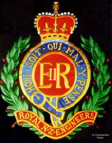
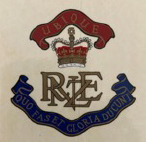
Following on from the earlier reference sources this document is to assist in research on the Corps of Royal New Zealand Engineers (RNZE) Military Railways. You are encouraged to look at the other research pages for further ideas, as there may be some duplication of material, and those pages will also give an overall history of the railway. Also, please look at the general research page as that contains many sources that may be of assistance.
The New Zealand National Army Museum
This museum is located at Waiouru. Its website is https://www.armymuseum.co.nz/ I cannot find any mention of them holding Unit War Diaries.
The New Zealand Military Historical Society
https://nzmhs.org.nz/ produces a trice yearly Journal called “The Volunteers”.
The Corps of Royal New Zealand Engineers
The RNZE have a very informative website at https://www.nzsappers.org.nz/. Inevitably, this section on the history must be very brief and those interested in the history of the Corps are referred to the website. In particular the short history at the bottom of this link.
https://www.nzsappers.org.nz/introduction/rnze-ct/corps-history/
The Corps Museum is in the Engineer Corps Memorial Centre at Linton Camp. https://www.nzsappers.org.nz/introduction/ecmc/museum/
The following organisation may be of help as well. They publish the Forts and Works Journal that has had at least one railway related article. Defence of NZ Study Group, PO Box 9724, Wellington, New Zealand 6141 –– www.donz.org.nz
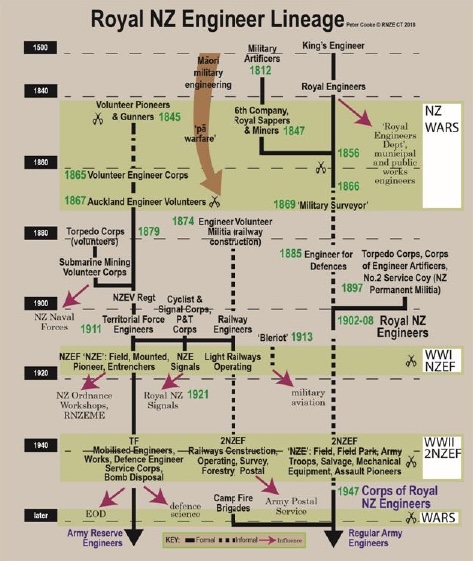
Courtesy Peter Cooke of the Defence of New Zealand Study Group
A very brief history of The Corps of Royal New Zealand Engineers with particular reference to railway troops
This has been based on Wikipedia. However, that information has been drawn from the reference sources later in tis document.
The first New Zealand European military engineering unit was an 82-man militia detachment employed as pioneers during the Flagstaff War in 1845-1846. It would be twenty years until the concept of military engineering was revisited by the colonial forces with the formation of the Volunteer Force in 1865. By the 1880s there were five volunteer engineer corps, including a torpedo corps ("torpedo" referred to undersea mines at this time). The engineers were disbanded in 1883, as adequate training could not be provided, but the Russian Scare of 1885 placed a new emphasis on costal fortifications and the engineer corps were revived. The early days of the Volunteer Corps must have been interesting as is described by H.E. Chamberlain in the link provided above.
In 1887 the military component of the armed constabulary was converted into the Permanent Militia, establishing the first New Zealand regular military force. The Permanent Militia was much smaller than the Volunteer Force and in 1888 consisted of only two companies: the Permanent Artillery and the Torpedo Corps. The Torpedo Corps became the Submarine Mining Branch in 1896 and then No. 2 Service Company in 1897. It was finally retitled as the Corps of Royal New Zealand Engineers on 7 January 1903 (backdated to 15 October 1902). This first rendition of the Royal New Zealand Engineers was short-lived and on 26 March 1908 the engineers were absorbed into the Electric light section of the Royal New Zealand Artillery.
The New Zealand Engineer Volunteers continued to exist until 5 October 1911 when they became the Corps of New Zealand Engineers as part of the conversion of the Volunteer force into the Territorial Force. The New Zealand Railway Corps and the New Zealand Post and Telegraph Corps were both formed as independent corps in October 1911, but were brought under the Corps of New Zealand Engineers umbrella in July 1913.
The New Zealand Railway Battalions
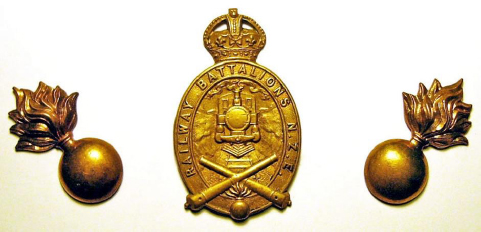
See https://nzhistory.govt.nz/media/photo/nzef-railway-battalions-badge
Formed in 1911, the North Island and South Island battalions made up a Railway Corps within New Zealand’s new Territorial Force, in which part-time service was compulsory for most teenage boys and young men. They were manned by Railways Department staff who were liable for military service under the 1909 Defence Act. The Corps was organised into two battalions made up of 15 companies with a total establishment (nominal strength) of 1271 men.
On the outbreak of war in August 1914 the Corps, which was commanded by Colonel E.H. Hiley, the Department's General Manager, was mobilised to guard every bridge and tunnel on New Zealand’s rail system. Later that month 258 of its members formed a Railway Engineers unit for service in German Samoa.
Thereafter the Railway Corps, like the rest of the Territorial Force, effectively became a feeder unit for the New Zealand Expeditionary Force (NZEF). The companies of the corps were led by men who were over-age or unfit for active service overseas, and were staffed mainly by railway workers aged under 20, the minimum age for overseas service. Meanwhile, from August 1914 other Railways Department staff enlisted in all branches of the NZEF.
First World War beyond Samoa
The Battle of the Somme in 1916 had shown that road transport was inadequate to move supplies and ammunition to the front line and to evacuate wounded. The Engineers were therefore required to build a light railway system close to the front line and in 1917 the 5th (NZ) Light Railway Operating Company was formed to specialise in these tasks. A complete history on New Zealand railway operations in WW1 is given in “British Military Railways Overseas in the Great War” published by BORHT. http://www.borht.org.uk/WW1.htm#WW1BOOK
Following the war the Corps of New Zealand Engineers was restructured. In 1921 the New Zealand Post and Telegraph Corps became a separate corps, the New Zealand Corps of Signals and the Railway Battalions were disbanded. In the same year the Corps of New Zealand Engineers were retitled as the Regiment of New Zealand Engineers, but reverted to the former name in 1923.
Second World War
Other non-divisional engineer companies were also formed to support logistics and transportation. By 1940 seven railway companies had been formed and were involved in the construction and operation of railways in Egypt and Libya. In 1942 the New Zealand engineers laid 400 km of new track across the western desert in 265 days and operated the first train to cross the El Alamein line following the breakout.
All the following images have been taken from Cody The Official History.
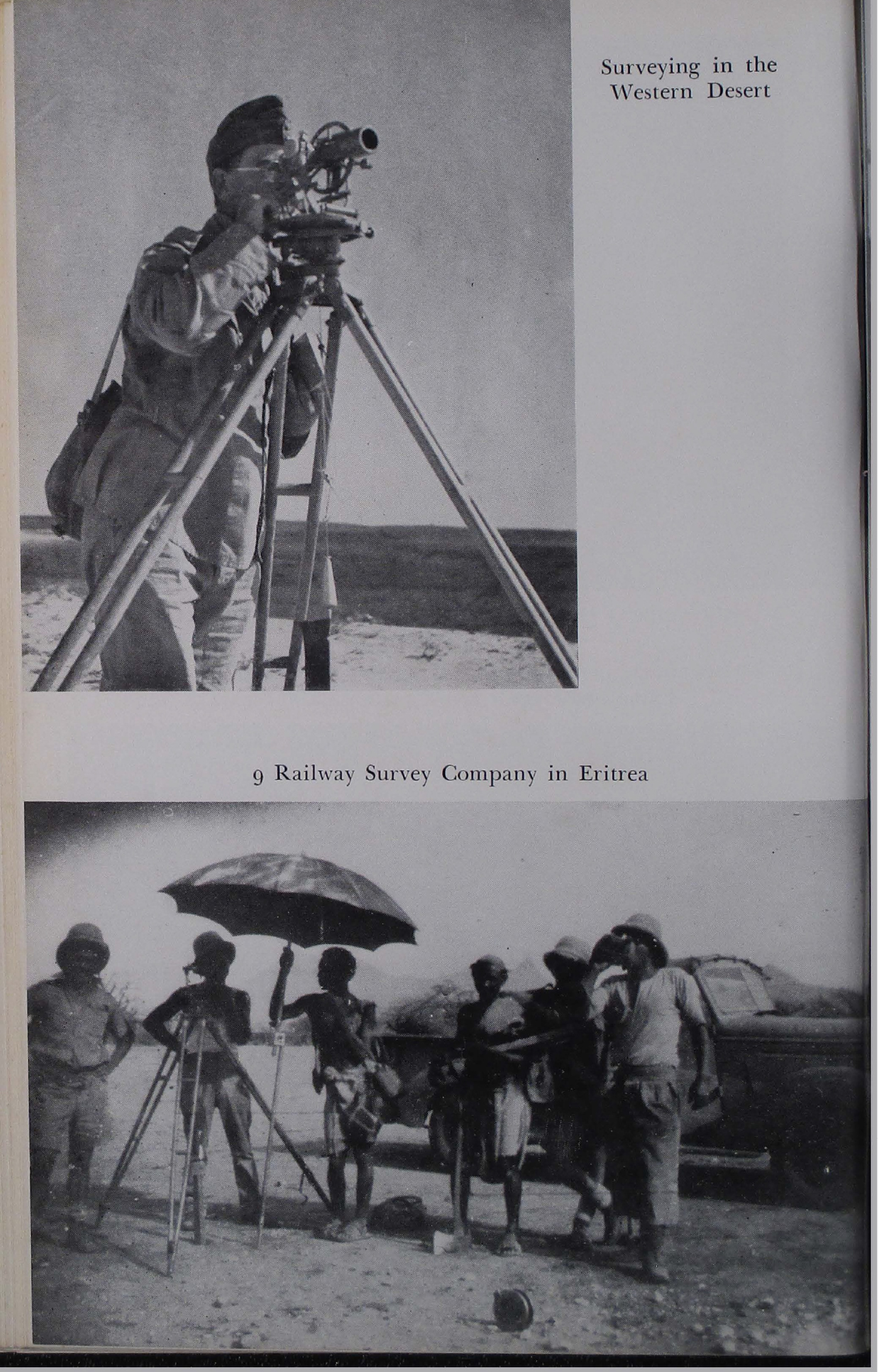
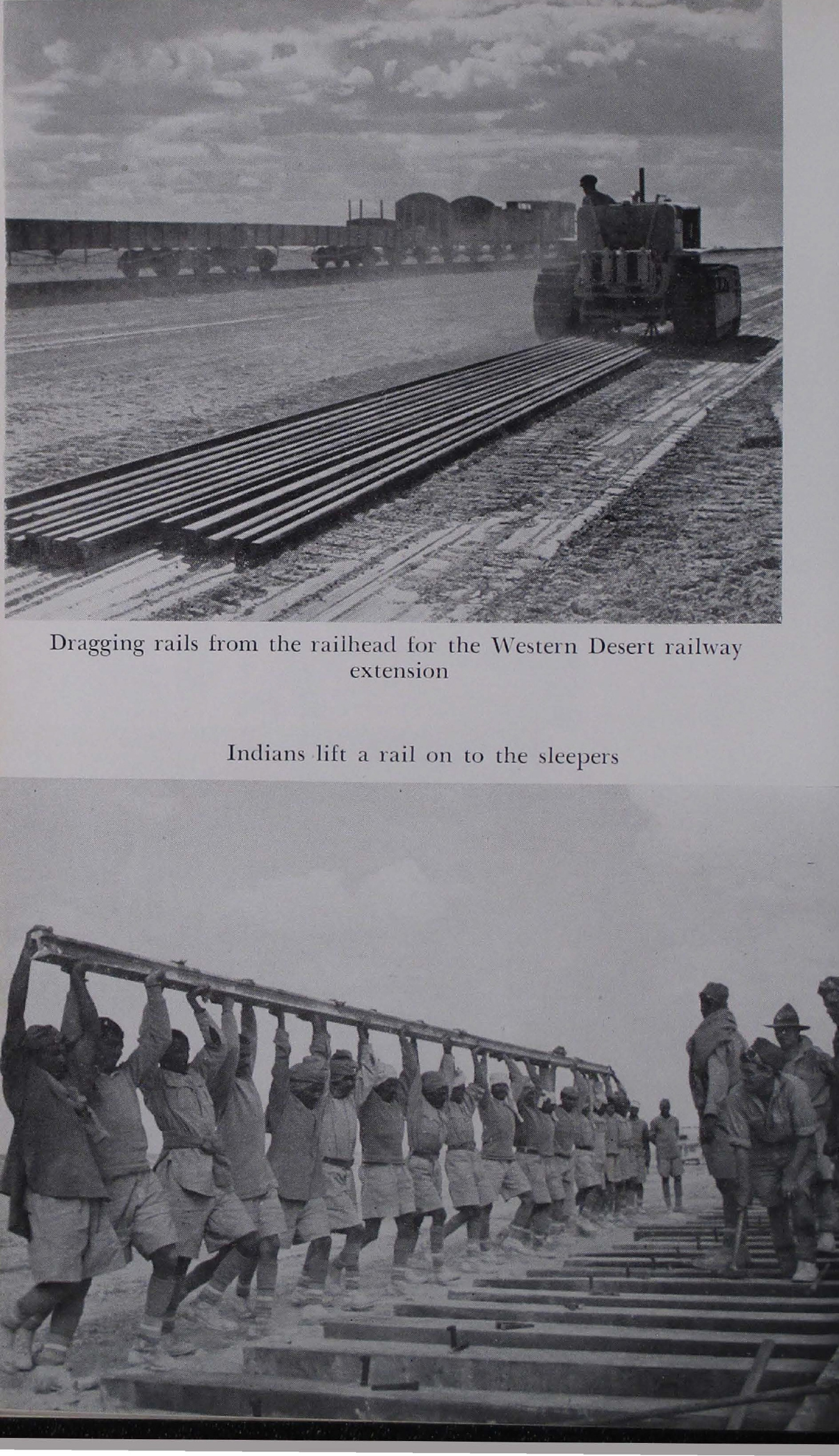
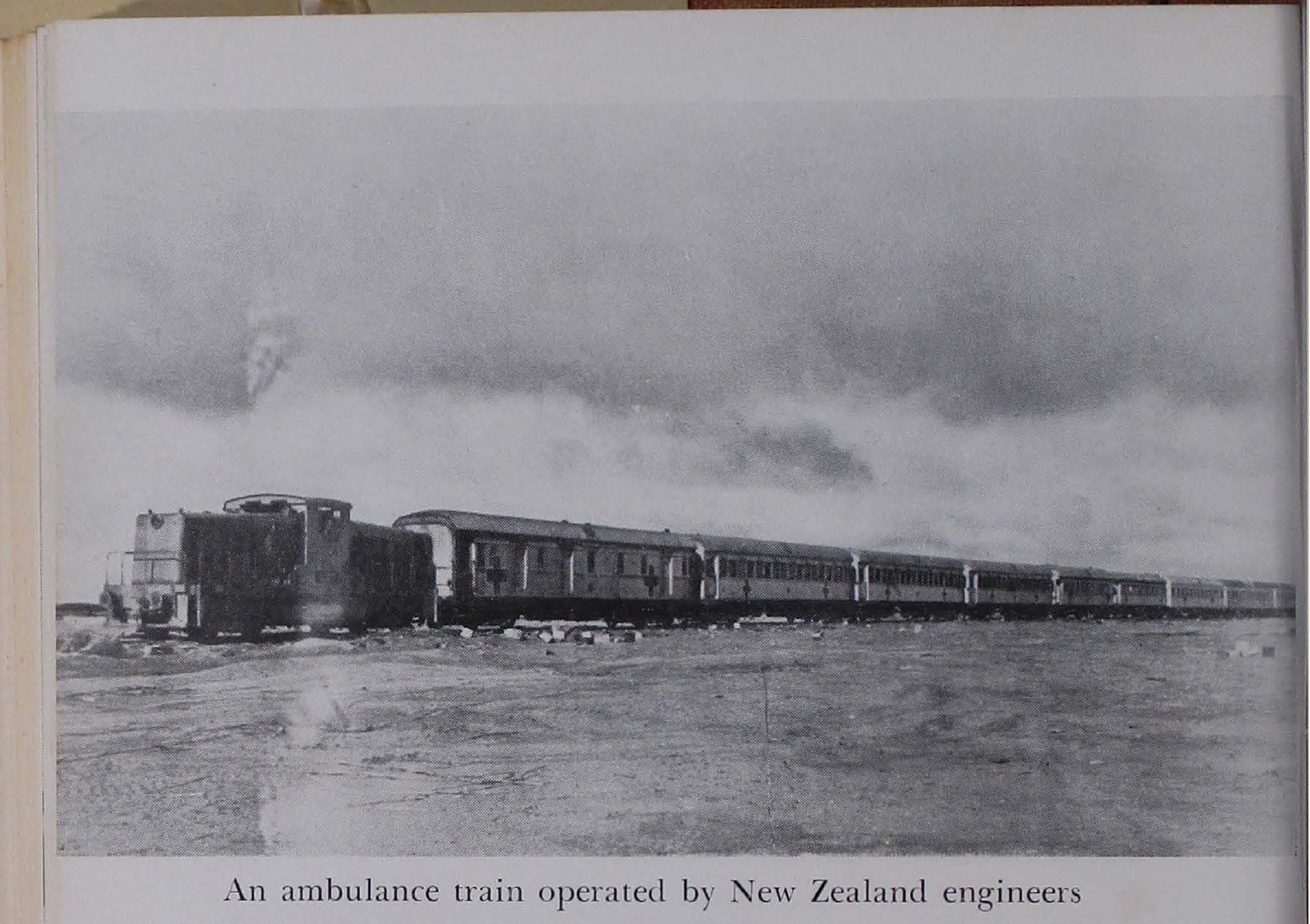
List of References
Title |
Date |
Publisher |
Town |
Remarks |
|
Annabell, N. |
Official History of the New Zealand Engineers during the Great War 1914-1919. |
1927 |
Evans, Cobb and Sharpe Ltd. |
Wanganui |
OCLC 181115321. |
Anon |
New Zealand Railway Men at War 1914-18 |
2016 |
|
|
ISBN:9780473354213 This reference was found in the Kippenberger Collection in the NZ National Army Museum but had no other details |
Bailey, D.C., Lt-Col., O.B.E. R.E. (ed) |
Engineers in the Italian Campaign 1943-1945 |
1945 |
Commander Mediterranean Forces |
|
Does not cover Survey and Transportation Directorates, but does cover, British, Canadian, South African, New Zealand, Jewish, Indian and Polish units. |
Cody, J. F. |
New Zealand Engineers, Middle East. Official History of New Zealand in the Second World War 1939–45. |
1961 |
Historical Publications Branch |
Wellington |
OCLC 557958881. |
Cooke, P |
Won by the Spade: How the Royal New Zealand Engineers Built a Nation. |
2019 |
Exisle Publishing |
Dunedin |
ISBN 9781775593645 |
George, Ernie |
The Fighting 16th |
1997 |
E George |
Hamilton |
16th Railway Operating Company 2nd New Zealand Expeditionary Force, ISBN: |
Judd, Brendan |
The Desert Railway |
2003 |
The Railway Book Committee |
Auckland |
|
Leary, L.P. |
New Zealanders in Samoa, |
1918 |
William Heinemann |
London |
|
McGibbon, I. |
Kiwi Sappers: The Corps of Royal New Zealand Engineers' Century of Service |
2002 |
Reed Books. |
Auckland |
ISBN 0790008270. |
Napier, Paul |
5th (NZ) Light Railway |
2008 |
The New Zealand Railway Observer, No.286, |
|
|
Napier, Paul |
The New Zealand Railway Engineer Battalions |
2002 |
Forts and Works, No. 14: p.1-10; Jul 2002 |
|
https://nzhistory.govt.nz/media/photo/nzef-railway-battalions-badge |
Napier, Paul |
'The New Zealand Railway Engineer Battalions' (Parts 1 & 2), |
2004 |
The New Zealand Railway |
|
|
Sage, C. |
Pacific Pioneers: The Story of the Engineers of the New Zealand Expeditionary Force in the Pacific. The Third New Zealand Division Histories. |
1945 |
Reed Publishing |
|
OCLC 12044068. |
Smith, Stephen John |
The Samoa (N.Z.) Expeditionary Force 1914–1915. |
1924 |
Ferguson & Osborn |
Wellington |
OCLC 8950668. |
|
| Registered Charity No 290944 | Company Limited by Guarantee No 1862659 |